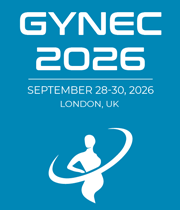Operative Vaginal Delivery
Operative Vaginal Delivery (OVD) is a procedure that is used to facilitate the delivery of a fetus through the cervix and vagina. It is typically used when a vaginal delivery is likely, but the obstetrician needs to use instruments to assist the delivery. OVD is rarely used in the United States due to the availability of alternatives such as cesarean section (C-section). The most common instruments used for OVD are forceps or vacuum extractors. Forceps are a pair of curved metal blades that are placed on either side of the baby’s head to help guide it through the birth canal. Vacuum extractors are a suction cup applied to the baby’s head to help pull the baby out. The primary indication for OVD is a prolonged second stage of labor. This is usually defined as more than two hours of pushing, or more than three hours if the mother has had an epidural. Other indications may include a non-reassuring fetal heart rate, fetal malposition, or maternal exhaustion. The benefits of OVD include a shorter pushing phase and a quicker delivery, which reduces the risk of maternal exhaustion and fetal distress.

Neda Zarrin-Khameh
Baylor College of Medicine, United States
Marlen Sulamanidze
Total Charm Clinic, Georgia
Mohamed M Hosni
London North West University Healthcare NHS Trust, United Kingdom
Neda Zarrin-Khameh
Baylor College of Medicine, United States
Marlen Sulamanidze
Total Charm Clinic, Georgia
Mohamed M Hosni
London North West University Healthcare NHS Trust, United Kingdom




Title : Evaluate the changes in SP-D levels in plasma during different phases of the menstrual cycle recruited from the Well- Adult Surfactant Protein Study (WASP)
Natnicha Kitti udom, University College London, Thailand
Title : Synergistic antifibrotic potential of protocatechuic acid and D-Carvone in liver protection
Ling Yin, Hefei Comprehensive National Science Center, China
Title : Pathologic findings in women with atypical glandular cells on Pap test
Neda Zarrin-Khameh, Baylor College of Medicine, United States
Title : Non-ablative radiofrequency for pelvic floor dysfunction and female intimate anti-aging: a 6-month prospective multi-centre cohort objectiv
Shaadaiti Wufuer, First Affiliated Hospital of Xinjiang Medical University, China
Title : Benign gynecological conditions and lifetime contraceptive patterns: a population-based analysis of the 2022–2023 national survey of family growth
Mayi Gnofam, Stony Brook University, United States
Title : Hysteroscopic endometrial resection with resectoscope versus Novasure ablation: A look at patient satisfaction with treatment of abnormal uterine bleeding and rates of progression to hysterectomy
Genevieve Kan, West Gippsland Healthcare Group, Australia